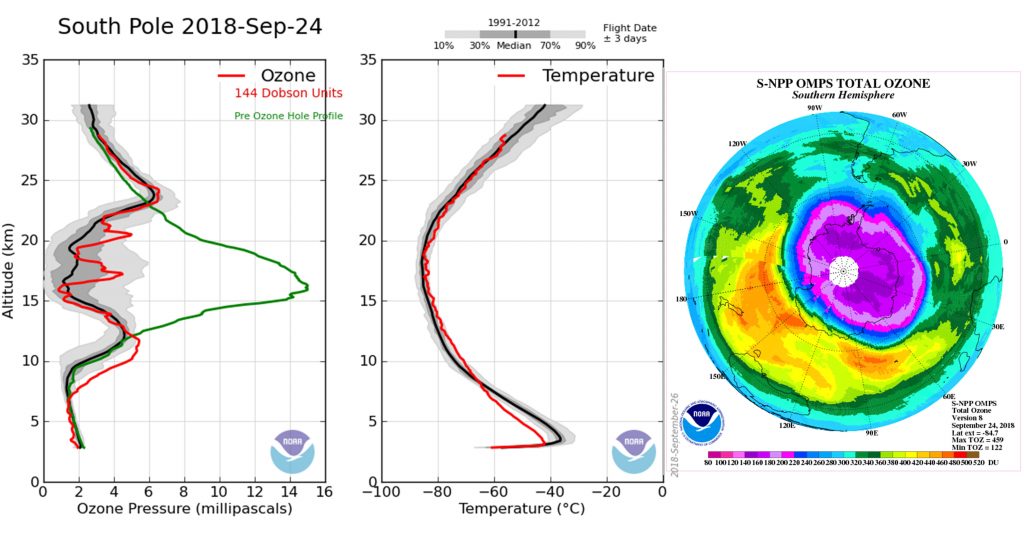This is an exciting time for the NOAA/CIRES ozone team in Boulder and at the South Pole. In Boulder, every morning starts with the question, “Any news from the South Pole?” We’re all eager to know if the latest balloon launch went well and if we are starting to see any signs of the ozone depletion over the South Pole.

2018 plastic balloon launch from the South Pole – Photo by Johannes Werthebach (Ice Cube)
From NOAA’s Global Monitoring Division headquarters in Boulder, Colorado, Patrick Cullis keeps up with communications on behalf of the team working at the South Pole. Science Techs Cherisa Friedlander and Sabrina Shemet prepare the instruments, launch the balloons, and collect the data while in Boulder Patrick processes the data and creates plots and profiles of ozone and meteorological data.

Checking out ozonesondes before launch at the Balloon Inflation Facility at the South Pole Station. Cherisa Friedlander

The plots show how much ozone was detected (red line) at every altitude as the balloon carrying the small instrument travels high in to the stratosphere to over 100,000 feet before bursting and falling back to the surface on a parachute. Using “baseline” profiles collected in July and August (green line) before the destruction period begins, we are able to see where and how much ozone has been destroyed by the free chlorine activated by the long-absent Sun returning to the sky above Antarctica. The satellite plot on the right is an overhead view looking down on Antarctica. The purple are clearly shows the area affected directly by this destruction layer.
